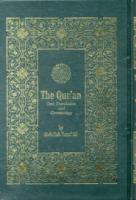- ホーム
- > 洋書
- > 英文書
- > Psychology
Full Description
The Routledge International Handbook of Creative Cognition is an authoritative reference work that offers a well-balanced overview of current scholarship across the full breadth of the rapidly expanding field of creative cognition. It contains 43 chapters written by world-leading researchers, covering foundational issues and concepts as well as state-of-the-art research developments.
The handbook draws extensively on contemporary work exploring the cognitive representations and processes associated with creativity, whether studied in the laboratory or as it arises in real-world practice in domains such as education, art, science, entrepreneurship, design, and technological innovation. Chapters also examine the sociocognitive and cultural aspects of creativity in teams and organisations, while additionally capturing the latest research on the cognitive neuroscience of creativity.
Providing a compelling synopsis of emerging trends and debates in the field of creative cognition and positioning these in relation to established findings and theories, this text provides a clear sense of the way in which new research is challenging traditional viewpoints. It is an essential reading for researchers in the field of creative cognition as well as advanced students wishing to learn more about the latest developments in this important and rapidly growing area of enquiry.
Contents
Part I: Reflections on the Fundamental Contents and Mechanisms of Creative Cognition 1. Divergent Thinking as Creative Cognition 2. Measuring Creativity with the Consensual Assessment Technique (CAT) 3. Constraints and Creativity: Classifying, Balancing, and Managing Constraints 4. The Role of Serendipity in Creative Cognition 5. The Two Faces of Curiosity in Creative Cognition: Curiosity1, Curiosity2 (and their Interaction) 6. Thinking Wide and Narrow: A 'Cultural Creative Cognition' Approach to Possibility thinking 7. Analogy and the Transfer of Creative Insights 8. Creative Cognition: From Ideation to Innovation 9. Insight in the Kinenoetic Field Part II: Reflections on the Nature of Creative Cognition as Revealed through Traditional Methodologies 10. Idea Generation and Associative Memory 11. Creatively Searching through Semantic Memory Structure: A Short Integrative Review 12. Mental Imagery and Creative Cognition 13. Incubation 14. Of Night and Light and the Half-Light: The Role of Multidimensions of Emotion and Tolerance of Uncertainty in Creative Flow 15. Problem-Solving, Collaboration, and Creativity 16. Metaphoric Creativity as Embodied Performance in Social Interaction 17. Analyzing Changing Patterns of External Reference Use from Informal Lab Group Presentations to Formal Colloquia 18. Measuring Judgment and Decision-making in Developmental Samples: Assessment of the Generation of Cognitively Sophisticated Responses and Implications for the Study of Creative Cognition 19. The Phenomenology of Insight: The Aha! Experience 20. Reconcilable Differences: Working Memory Capacity Both Supports and Hinders Insight 21. Comparing Theoretical and Computational Models of Insight: Investigating Cognitive and Phenomenological Perspectives 22. Collaborative Meta-reasoning in Creative Contexts: Advancing an Understanding of Collaborative Monitoring and Control in Creative Teams Part III: Reflections on the Nature of Creative Cognition as Revealed through Cognitive Neuroscience Approaches 23. An Archaeological Perspective on Creative Cognition 24. The Role of Semantic versus Episodic Memory in Creative Cognition 25. Network Neuroscience of Domain-General and Domain-Specific Creativity 26. A Closer Look at Transitions Between the Generative and Evaluative Phases of Creative Thought 27. Markers of Insight 28. A Cognitive Neuroscience Perspective on Insight as a Memory Process: Searching for the Solution 29. A Cognitive Neuroscience Perspective on Insight as a Memory Process: Encoding the Solution Part IV: Reflections on Creative Cognition from Pedagogical, Organisational, Archaeological and Post-Phenomenological Perspectives 30. Creativity in Education 31. Creative Learning: A Pedagogical Perspective 32. Tool Use and Creativity 33. Art Through Material Engagement...and Vice Versa 34. Creativity as a Discursive Construct 35. Collaborative Creativity: Information-driven Coordination Dynamics and Prediction in Movement and Musical Improvisation 36. Common Creativity Part V: Reflections on Creative Cognition in Domains Involving Creativity and Innovation 37. Team Cognition and Team Creativity 38. Creative Cognition in Engineering and Technology 39. Creative Cognition and Entrepreneurship 40. Creative Cognition in Advertising 41. The Creative Generation and Appreciation of Artistic Artifacts in the Visual Domain 42. Individual Innovation and Creativity: An Interdisciplinary Mapping of Creative Cognition Part VI: Reflections on the Paradoxical Misalignment Between Findings that Derive from In Vivo Versus In Vitro Research on Creative Cognition 43. A Quandary in the Study of Creativity: Conflicting Findings from Case Studies versus the Laboratory








